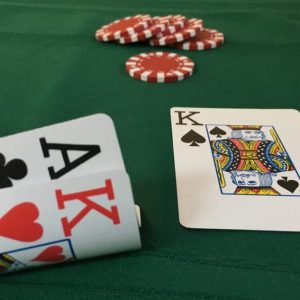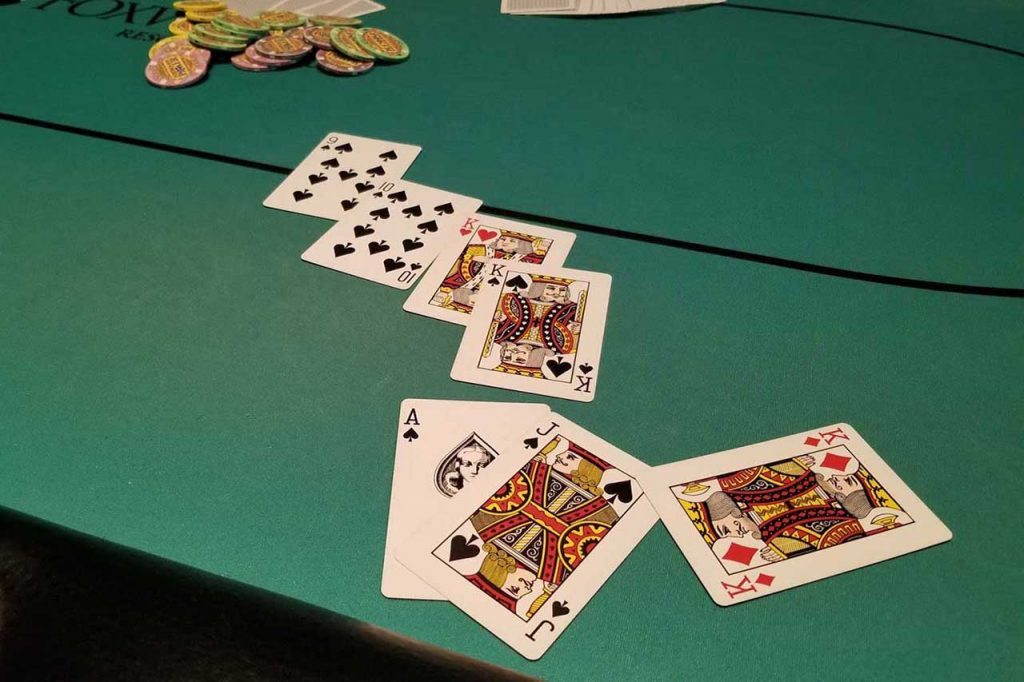Times You Can Deviate From Third Street Strategy in Stud Hi-Lo

Stud 8 or Better is a game where patient players can consistently win. It is one of the few games where a tight strategy can still win consistently. However, there’s nothing wrong with loosening your play a bit to give yourself a chance for a better hourly rate.
One area where you can loosen up your game is when playing high pairs and high cards on Third Street. Today, we will go over some times where you can deviate from what’s considered “proper Third Street strategy” in Stud Hi-Lo Split.
Buried Pairs
I cannot tell you the number of times I have come into a pot with a buried medium to high pair in Stud 8 and come out a winner. You’ll consider playing this hand in a couple of situations. First, when you are in a multi-way pot and none of your outs are showing.
The next time is when it is clear that all of your opponents are going low. This one is a bit trickier as you have to worry about running into scoop hands. However, this play often works enough to make it a solid long-term winner.
A great example of playing buried pairs is an event I played at Binions a few years ago. I came in with buried jacks against two fairly well known lower-tier pros. They both clearly had low starters and I came along. I caught a jack on Fourth Street and one of the two players caught high.
By Fifth Street, the other player caught high and I was in good shape to no worse than chop. I ended up filling up on Sixth and neither player ended up completing their low. One of the two backed into two pair and ended up calling bets from me on Sixth Street and the River.
The key to playing a buried pair is to know when to get out. If your opponents are improving, you fail to improve, or there is heavy action on subsequent streets, it is time to abandon ship.
High Cards With Ace Door Card
This hand is a bit trickier to play, but when you have three high cards with an ace door card, you have a lot of chances to steal the pot. If you’re the only ace showing, you may be able to take the pot on Third Street with a completion.

Afterward, you can take the pot by fifth if you improve in one of two ways. If you catch another ace, players are probably going to fold in anticipation of you catching trip aces. When you catch two running low cards, you will also likely force a fold provided that someone else isn’t drawing well.
If the two aforementioned scenarios don’t happen, you have to improve to a four-straight to continue in the hand beyond Fifth Street. Other exceptions are if you start with a hand like A-K-10 and catch a king and ten for two pair. You must have aces, two pair, or a four-straight to continue with this hand.
High Flush Starters
I like to play a lot of three-card high flush starters, particularly if they are with the ace. While these are one-way hands, you are generally not going to get scooped when you hit your hand. The key to playing this hand is that you have to improve to either a four-flush or a pair of aces by Fifth Street. If you play three high flush cards without an ace, you must improve to a four-flush by Fifth Street or fold.
The largest poker tournament pot I’ve ever chopped was when I started with A-K-J of spades against two other low starters. I caught perfect and caught the 10s on Fourth Street and the Qs on Fifth Street to make my Royal.
Both opponents made hands as well with one making a straight and the other a wheel. It was a perfect scenario where all three players went to the river with the betting capped every street. In the end, I only chopped, but we knocked out the other player and both had healthy chips stacks. I ended up cashing in the tournament.
The three scenarios listed above are just minor adjustments you can make to your Third Street strategy that can net you a larger hourly win. Good luck at the poker tables.
